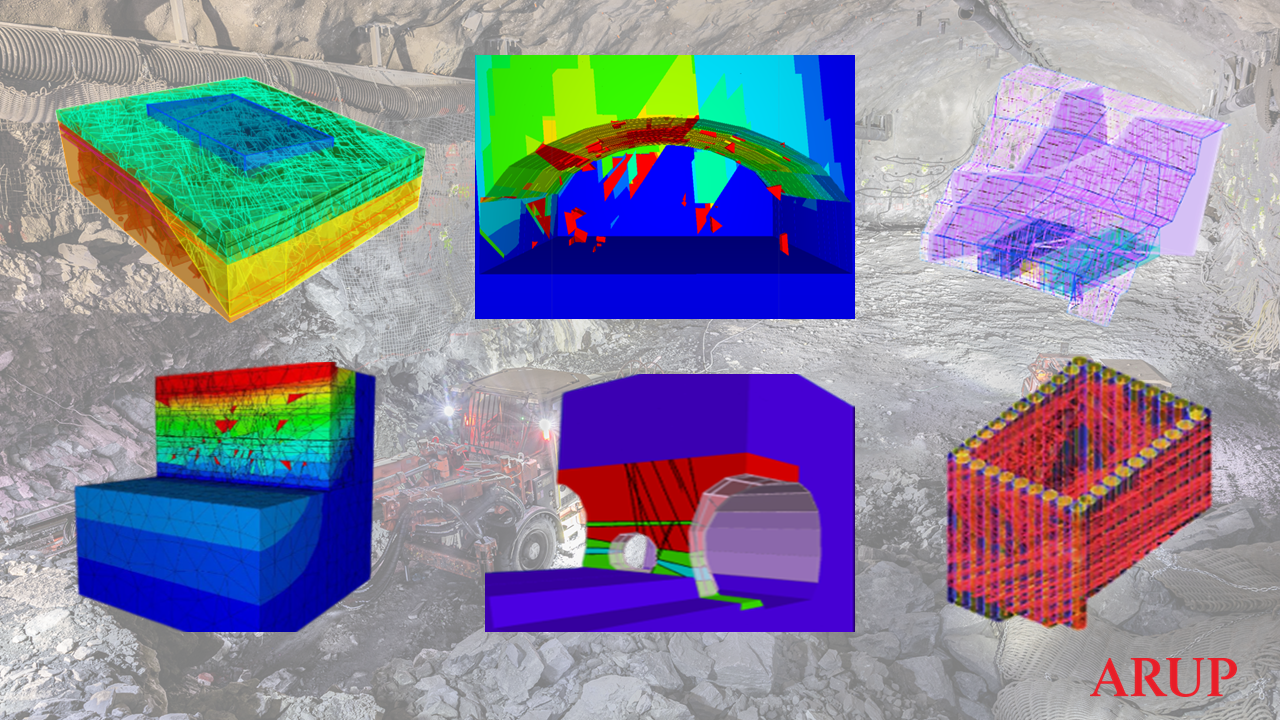

Underground Space Design Using DFN-based Tools
October 30 @ 5:30 pm - 7:00 pm AEDT
NOTE: THIS EVENT IS DEFINITELY FREE FOR ATS MEMBERS. To avoid the $30 cost for technical society members, please register using your ATS registered email address and the cost will be waived as you advance through the registration process.
Advancing ground support design: Kinematic vs DEM-Based ground stability approaches
Event overview
The introduction of remote mining technologies is pushing designers to challenge traditional mechanical excavation sequences and redefine the balance between safety and productivity, especially where worker’s OH&S is safeguarded by the use of remote and autonomous mining equipment.
The ability to quantify ground behaviour is key to defining ground risks and enhancing productivity while providing safe designs for underground spaces. The use of Discrete Fracture Network (DFN) models is an established approach for simulating ground conditions involving jointed rock masses. When combined with discontinuum numerical modelling, the approach can capture realistic ground behaviours such as interlocking and unravelling.
This talk will present a comparison between static kinematic block stability assessments (the traditional DFN design method) against a DFN-based Distinct Element Modelling (DEM) approach. The comparison of the two DFN methods provides a framework into predicting interlocking and unravelling behaviours and an additional perspective on the definition of key blocks. This framework enables a quantifiable ground behaviour focused approach for the design of excavations and ground support. A case study of a recent project where this framework was implemented will be presented to demonstrate the benefits and limitations.
Learning Outcomes
Develop greater insights into numerical modelling of discrete fracture networks Understand how these model methods are incorporated in real projects.
Speaker
Julian Ng BEng (Hons), MEngSc, MIEAus
Senior Geotechnical / Tunnelling Engineer, Arup
Julian is a Senior Engineer with Arup’s Sydney office and has over eight years of experience in geotechnics and tunnelling. He has been involved in a range of buildings, transport, water, mining and civil projects including Snowy 2.0 and Sydney Metro in Australia and projects internationally in Hong Kong and the UK. He has in-depth knowledge of rock mechanics and complex numerical analyses gained through his experience in the design of tunnels and underground space. With specialist skills in discrete element modelling techniques, he continues to push the boundaries of Arup’s global tunnelling and rock mechanics group. He combines his knowledge with skills and experience from site, having worked closely with contractors in both consulting and contracting role, to provide engineering solutions that are practical, cost-effective and technically sound.
Event sponsor


